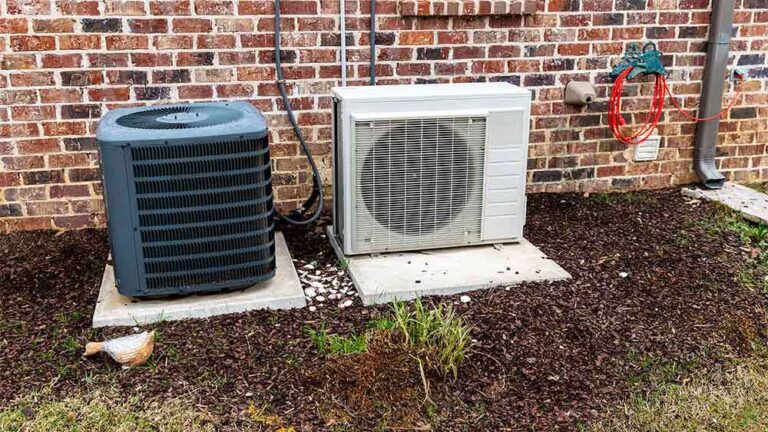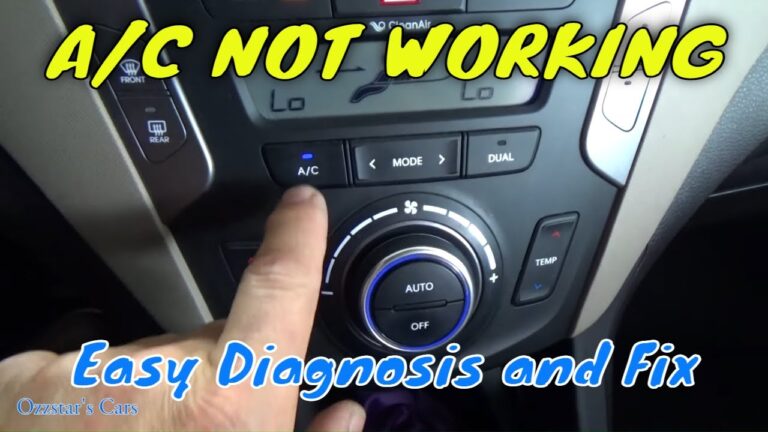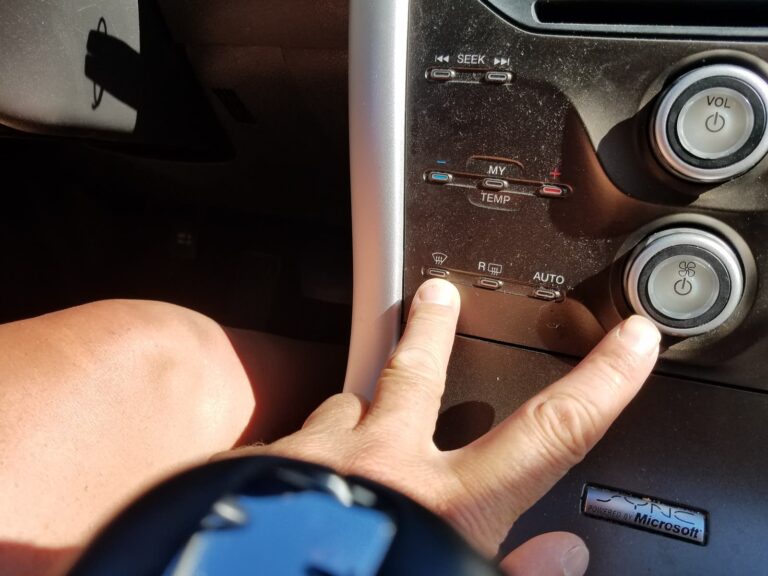How Do I Know If My AC Thermostat Is Bad? 10 Warning Signs
Your AC thermostat might be bad if it doesn’t respond to settings or if the temperature reading is incorrect. Inconsistent or fluctuating temperatures can also indicate issues.
An AC thermostat plays a crucial role in maintaining a comfortable indoor environment. Faulty thermostats can lead to inefficient cooling, higher energy bills, and discomfort. Common signs include the unit not turning on, incorrect temperature readings, or the system cycling on and off frequently.
Addressing these issues promptly can save money and prevent further damage. Regular maintenance and periodic checks can ensure your thermostat functions correctly, providing a more comfortable and energy-efficient home. Always consult a professional for an accurate diagnosis and repair.
Ac Not Responding
Is your air conditioner not responding to your commands? This can be frustrating, especially during hot days. A faulty thermostat may be the cause. Here, we explore some common issues.
No Power
First, check if your thermostat has power. If the display is blank, the unit might have lost power. Ensure the circuit breaker is not tripped. Verify the batteries are not dead. Replace the batteries if needed.
If it still has no power, inspect the wiring. Loose or damaged wires can disrupt power. Use a multimeter to check for continuity. Seek professional help if you are unsure about handling electrical components.
Unresponsive Controls
Are the thermostat controls unresponsive? This can be another sign of a bad thermostat. Try adjusting the temperature setting. Observe if the AC responds or not. If nothing happens, the thermostat might be faulty.
Ensure the thermostat is set to the correct mode (cooling mode). Sometimes, simple settings can cause confusion. If controls remain unresponsive, reset the thermostat. Refer to your manual for reset instructions.
If resetting doesn’t work, the internal components might be damaged. In this case, replacing the thermostat could be necessary. Ensure the new thermostat is compatible with your HVAC system.

Credit: www.youtube.com
Temperature Fluctuations
Experiencing temperature fluctuations can be a clear sign of a bad AC thermostat. When your home feels too hot or too cold, it can be uncomfortable. Understanding the causes of these fluctuations can help you diagnose the problem.
Inconsistent Cooling
If your AC system fails to maintain a consistent temperature, the thermostat might be bad. You may set the thermostat to 72°F, but the actual temperature varies. This inconsistency can lead to discomfort and higher energy bills.
Check if certain rooms feel colder or warmer than others. If the cooling is uneven, the thermostat may be sending incorrect signals to the AC unit. This can cause the unit to cycle on and off at the wrong times.
| Symptom | Possible Cause |
|---|---|
| Uneven Room Temperatures | Faulty Thermostat Sensor |
| AC Cycles On and Off Frequently | Incorrect Thermostat Settings |
Frequent Changes
Do you find yourself frequently adjusting the thermostat? This could mean the thermostat is bad. Constantly changing the temperature settings is not normal. A good thermostat should maintain your desired temperature without frequent adjustments.
Make a note of how often you need to change the settings. If it’s more than once a day, the thermostat might be malfunctioning. This can lead to inefficiency and wear out your AC system faster.
- Check the thermostat’s location. It should not be near heat sources.
- Make sure the thermostat is clean and free of dust.
- Replace the batteries regularly to ensure it functions properly.
Ac Runs Constantly
Is your AC running all the time? This could mean a bad thermostat. An AC that never stops can waste energy and cause high bills. Let’s look at signs of a failing thermostat.
Never Turns Off
If your AC never turns off, it might be a thermostat problem. The thermostat should tell the AC to stop once the set temperature is reached. If it doesn’t, the AC keeps running. This overworks the unit and causes wear and tear. Check if the thermostat is responding. If not, it might need repair or replacement.
High Energy Bills
A constantly running AC can lead to high energy bills. If you notice a sudden spike in your bill, your thermostat could be faulty. Compare your current bill with past bills. A big increase can indicate an issue. Fixing the thermostat can save energy and money.
Ac Short Cycles
Understanding AC short cycles is crucial for maintaining your home’s comfort. Short cycling means your AC turns on and off frequently. This can signal a bad thermostat. Let’s explore the signs.
Frequent On/off
When your AC unit turns on and off frequently, it indicates a problem. A bad thermostat often causes this issue. Your AC should have longer, consistent cycles. Frequent on/off cycles reduce efficiency and increase wear and tear.
- AC turns on and off in less than 10 minutes.
- Home temperature fluctuates often.
- High energy bills due to inefficient operation.
Inefficient Operation
An inefficient AC system is another sign of a bad thermostat. When the thermostat cannot read the temperature correctly, it misguides the AC. This leads to uneven cooling and discomfort in your home.
| Signs of Inefficient Operation | Possible Causes |
|---|---|
| Inconsistent temperature in rooms | Faulty thermostat readings |
| High energy consumption | Frequent on/off cycles |
| Short cooling periods | Thermostat not calibrated |
Regular maintenance can prevent these issues. Check your thermostat settings and ensure it is in good condition. A properly functioning thermostat ensures efficient cooling and comfort.
Incorrect Temperature Display
Have you ever noticed that your AC thermostat shows a different temperature than the actual room temperature? This issue can be confusing and frustrating. An incorrect temperature display can signal that your thermostat is faulty. Let’s explore some key signs of a bad thermostat.
Mismatch With Room Temp
One clear sign is a temperature mismatch between your thermostat and the room. You might feel cold, but the thermostat shows a warm reading.
To check, use a separate thermometer to measure the room temperature. Compare the reading with your thermostat’s display. If there’s a large difference, your thermostat could be bad.
Regularly checking the room temperature helps in spotting such issues early. This can save you from uncomfortable situations.
Faulty Readings
Another sign is if the thermostat shows faulty readings consistently. For example, it might display the same temperature all the time. Or the temperature might change erratically without reason.
Faulty readings can make your AC system work harder. This leads to higher energy bills and reduces the lifespan of your AC unit.
Here is a quick checklist to identify faulty readings:
- Thermostat shows the same temperature always.
- Temperature changes without adjusting the thermostat.
- Thermostat display flickers or goes blank.
If you notice any of these signs, it might be time to replace your thermostat.
Non-responsive To Settings
Is your AC not responding to thermostat settings? This issue can be frustrating, especially during hot weather. Below, we cover two key signs that your thermostat might be failing: No Change in Temp and Settings Ignored.
No Change In Temp
One clear sign of a bad thermostat is a lack of temperature change. If you adjust the settings but the room stays the same, the thermostat might be faulty. This means your AC can’t properly cool or heat your space.
| Symptom | Description |
|---|---|
| No Temperature Change | Thermostat adjustments do not alter room temperature. |
Settings Ignored
Another sign is when your AC ignores your settings. If you set a specific temperature but the system doesn’t follow, the thermostat may be broken. This issue can lead to uncomfortable living conditions.
- Incorrect Temperature: The room feels too hot or too cold.
- Unresponsive Controls: Settings changes don’t affect the AC.
If you notice these problems, consider checking or replacing your thermostat. A functioning thermostat is crucial for maintaining a comfortable home.
Old Or Outdated Thermostat
Many homeowners overlook the importance of their thermostat. An old or outdated thermostat can cause several issues. It may affect your AC’s performance and your comfort.
Lack Of Modern Features
An old thermostat lacks modern features. Modern thermostats offer Wi-Fi connectivity. They allow you to control your AC from your phone. An outdated device will not have these features. Smart thermostats can learn your schedule. They can adjust the temperature automatically. They help you save on energy bills.
Age Of Device
Check the age of your thermostat. Most thermostats last about ten years. Older devices are less efficient. They may not work correctly. If your thermostat is over ten years old, consider replacing it. Newer models are more accurate. They provide better temperature control.
Here is a quick comparison of features:
| Feature | Old Thermostat | New Thermostat |
|---|---|---|
| Wi-Fi Connectivity | No | Yes |
| Smart Scheduling | No | Yes |
| Energy Saving | Low | High |
Signs of an old thermostat:
- No Wi-Fi control
- Lacks smart features
- Over ten years old
Benefits of a new thermostat:
- Remote control via phone
- Learns your schedule
- Improves energy efficiency
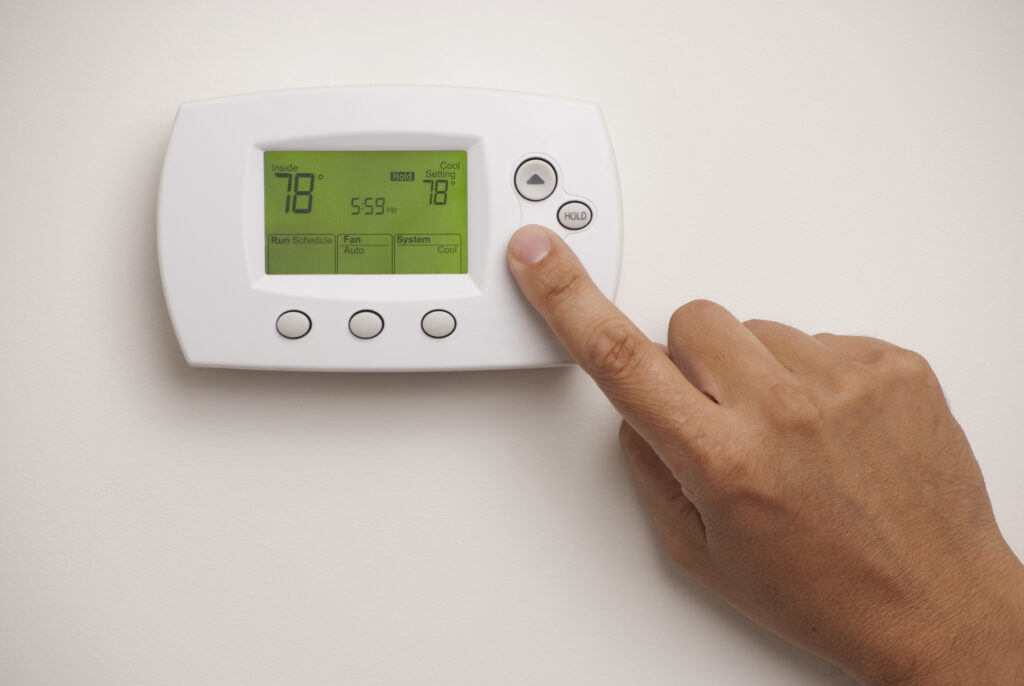
Credit: www.blindandsons.com
Physical Damage
Physical damage is a common indicator of a faulty AC thermostat. Inspecting your thermostat for visible issues can help determine if it’s functioning properly. Here are some key areas to check:
Cracks Or Wear
Examine the thermostat’s casing carefully. Look for any cracks or signs of wear. Cracks can allow dust and moisture to enter, causing internal damage.
Worn buttons or a faded display can also indicate the thermostat is aging. It might not respond accurately to your settings.
Use a flashlight if needed. A thorough inspection ensures you don’t miss any damage.
Loose Wiring
Loose wiring is another sign of a bad thermostat. Gently remove the cover to expose the wires.
Check for any disconnected wires or loose connections. Loose wires can disrupt the electrical flow, causing erratic behavior.
Ensure all wires are securely connected. If you find any, tighten them with a screwdriver.
If you’re not comfortable doing this, consider hiring a professional. Ensuring proper connections can prevent further issues.
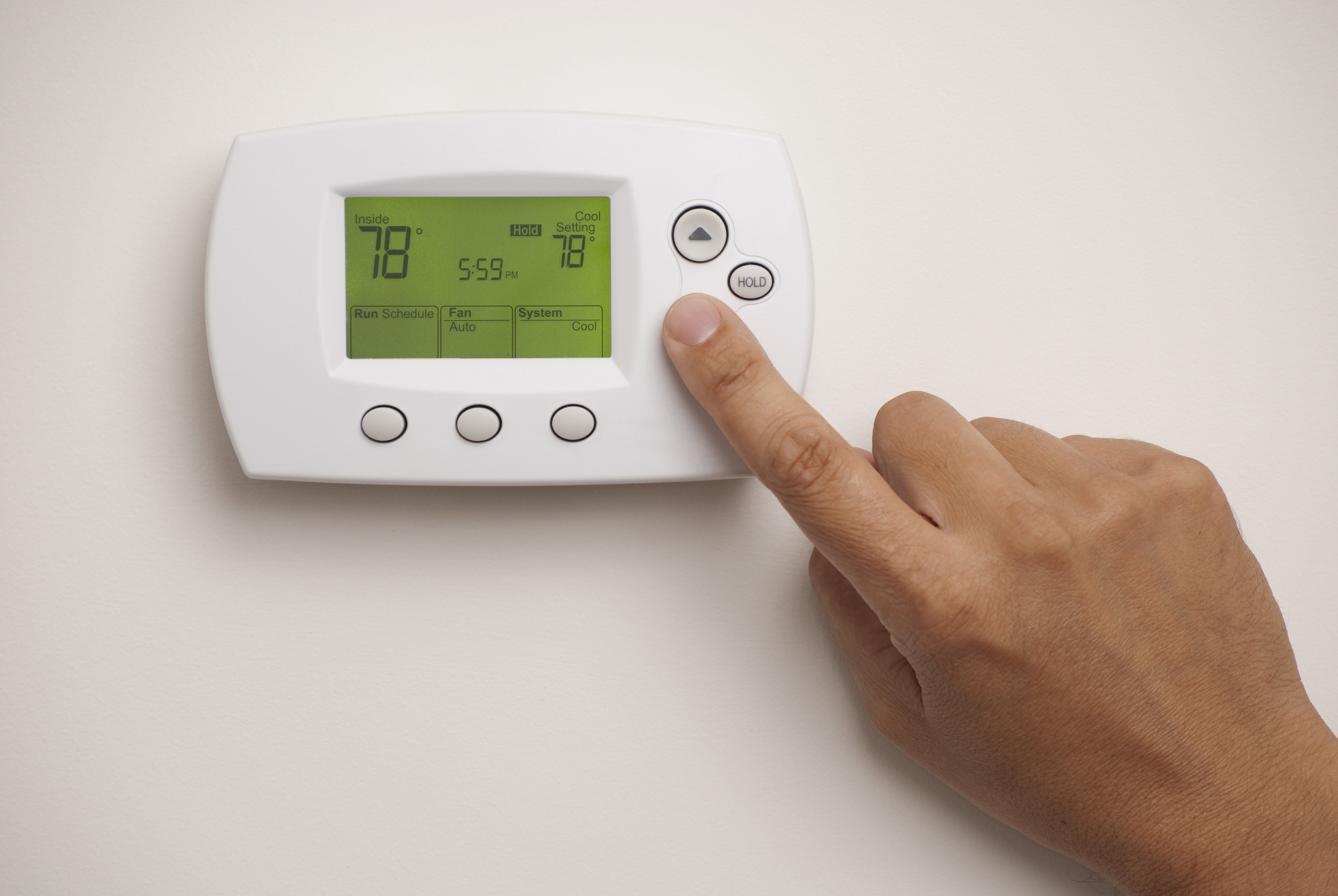
Credit: www.gopreferred.com
Frequently Asked Questions
How To Test If A Thermostat Is Bad?
To test a thermostat, turn off power, remove the cover, and use a multimeter to check for continuity. If there’s no continuity, replace the thermostat.
How Do I Know If I Need A New Thermostat For My Ac?
Your AC may need a new thermostat if it doesn’t respond to temperature changes, displays incorrect readings, or cycles on and off frequently. Another sign is if your energy bills have unexpectedly increased. Always consult a professional for accurate diagnosis and replacement.
How To Tell If An Ac Thermostat Is Not Working?
Check if the display is blank or unresponsive. Ensure the thermostat settings match your desired temperature. Verify if the AC unit fails to start or stop. Listen for unusual noises. Consider replacing batteries or consulting a professional if issues persist.
Conclusion
A malfunctioning AC thermostat can impact your comfort and energy bills. Regular checks can prevent bigger issues. Look for signs like erratic temperatures or unresponsive controls. Prompt action ensures your AC runs smoothly. Save money and stay comfortable by addressing thermostat problems early.
Enjoy a well-functioning, efficient cooling system.


